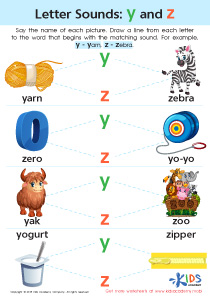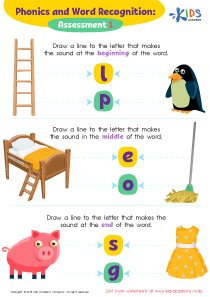Vocabulary enhancement Normal Elementary Phonics Worksheets for Ages 4-9
6 filtered results
-
From - To
Enhance your child’s vocabulary with our engaging Normal Elementary Phonics Worksheets, specially designed for ages 4 to 9! These worksheets incorporate phonics fundamentals to boost language skills through interactive learning. Featuring a variety of fun activities, including match-the-word exercises and fill-in-the-blank challenges, they help reinforce comprehension and word recognition. Ideal for both classroom and home use, our worksheets cater to diverse learning styles, ensuring that every child can progress at their own pace. Discover the joy of learning while building essential vocabulary skills. Empower your young learners today with our comprehensive vocabulary enhancement resources!
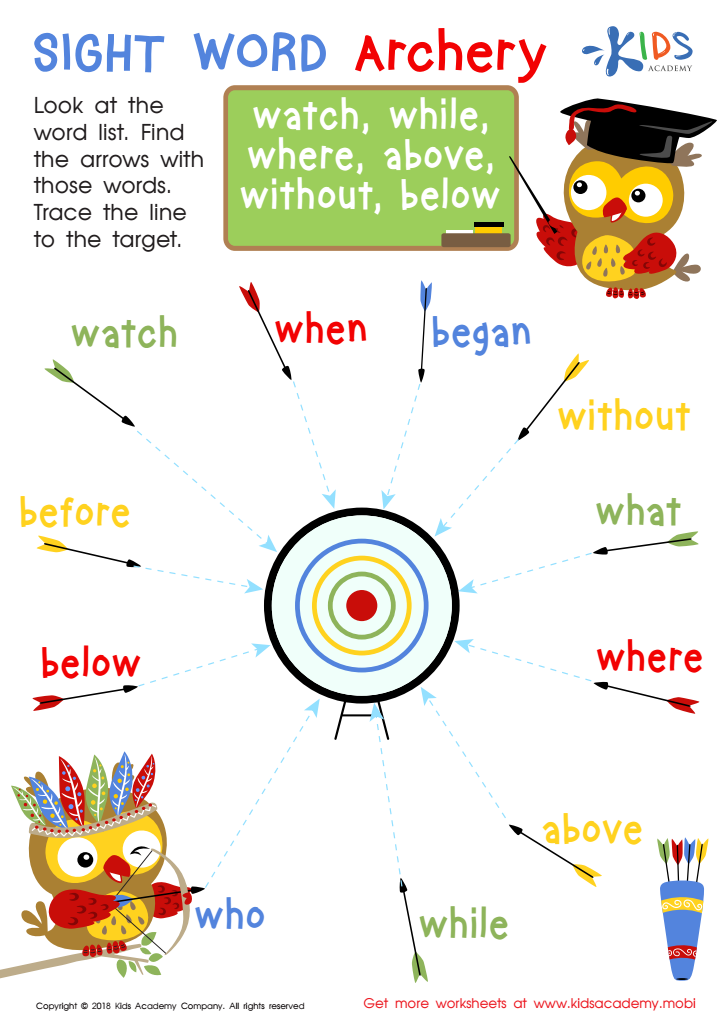

Sight Word Archery Worksheet
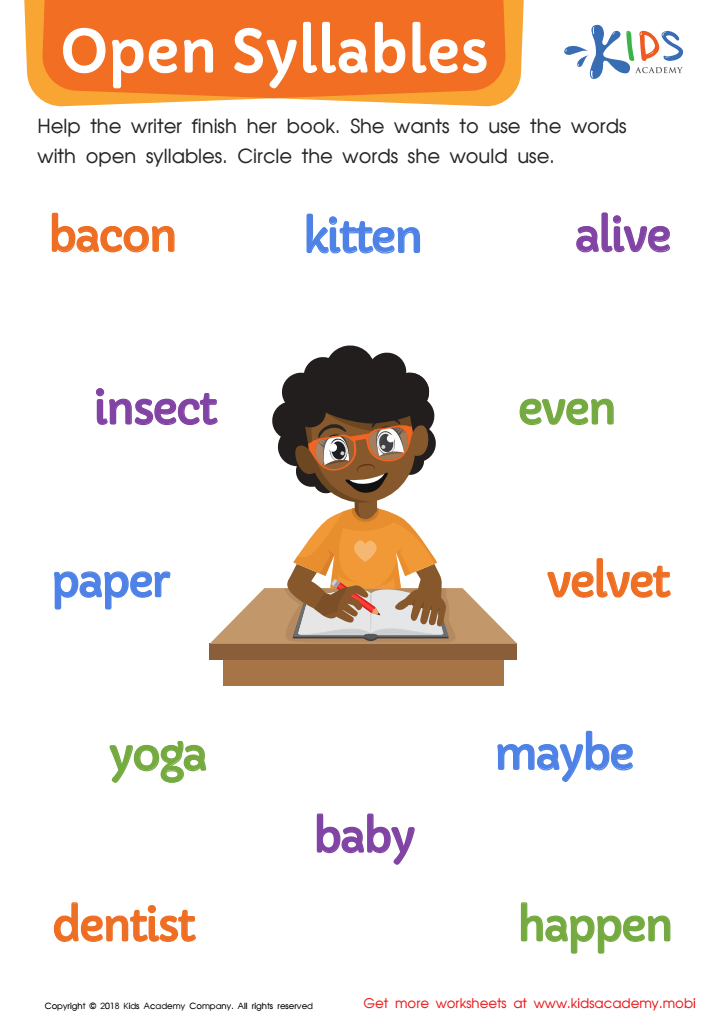

Open Syllables Worksheet
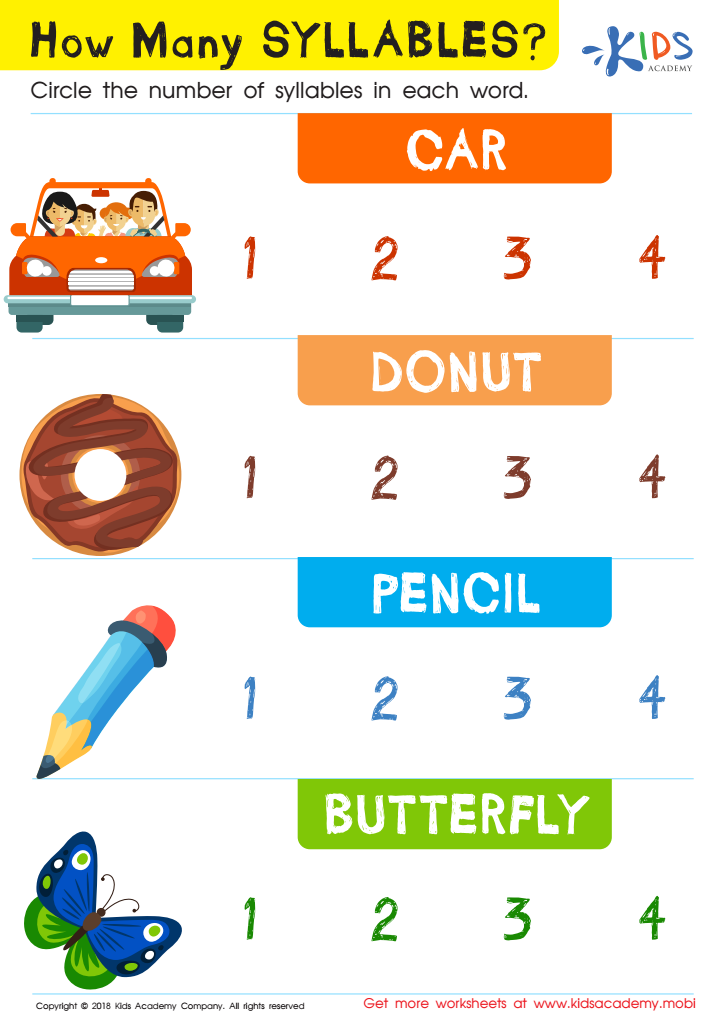

How Many Syllables? Worksheet
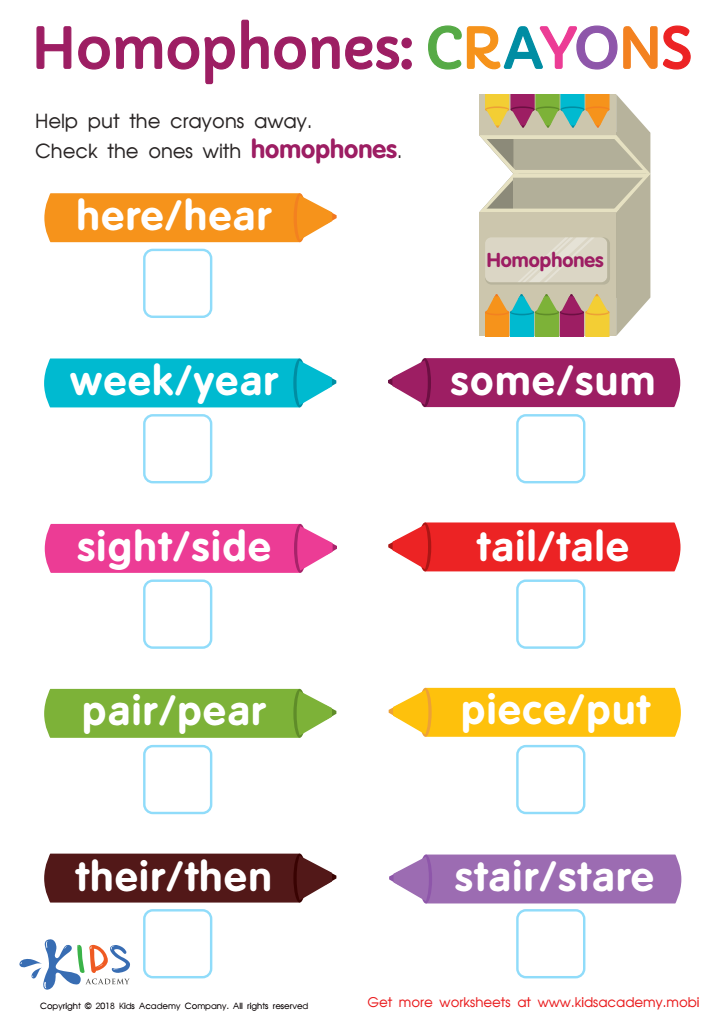

Homophones: Crayons Worksheet
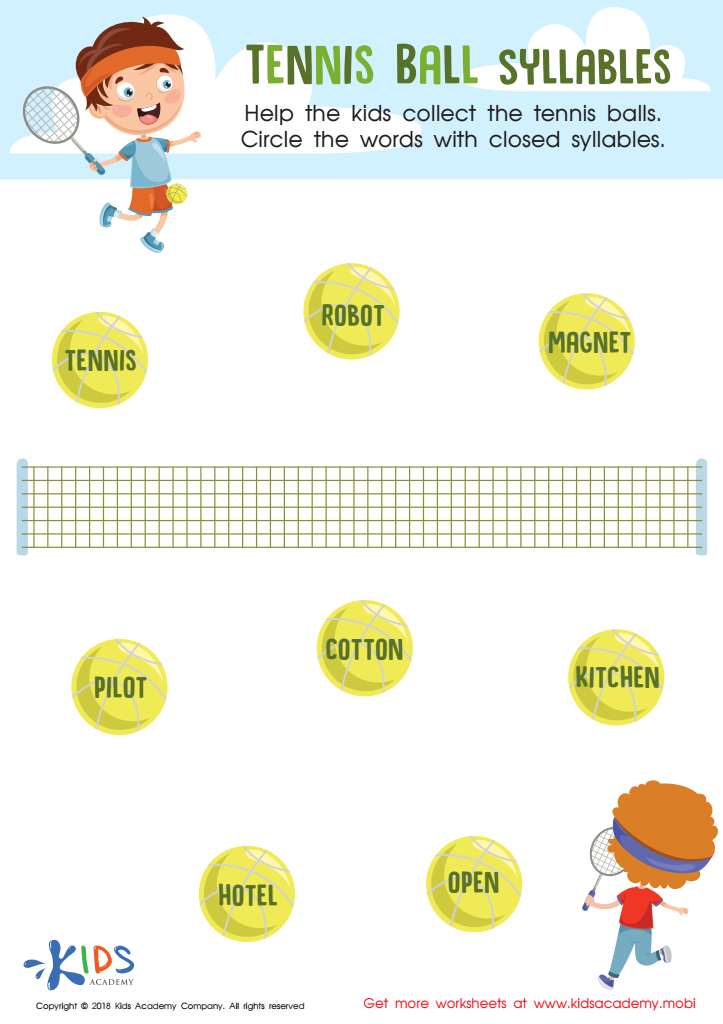

Tennis Ball Syllables Worksheet
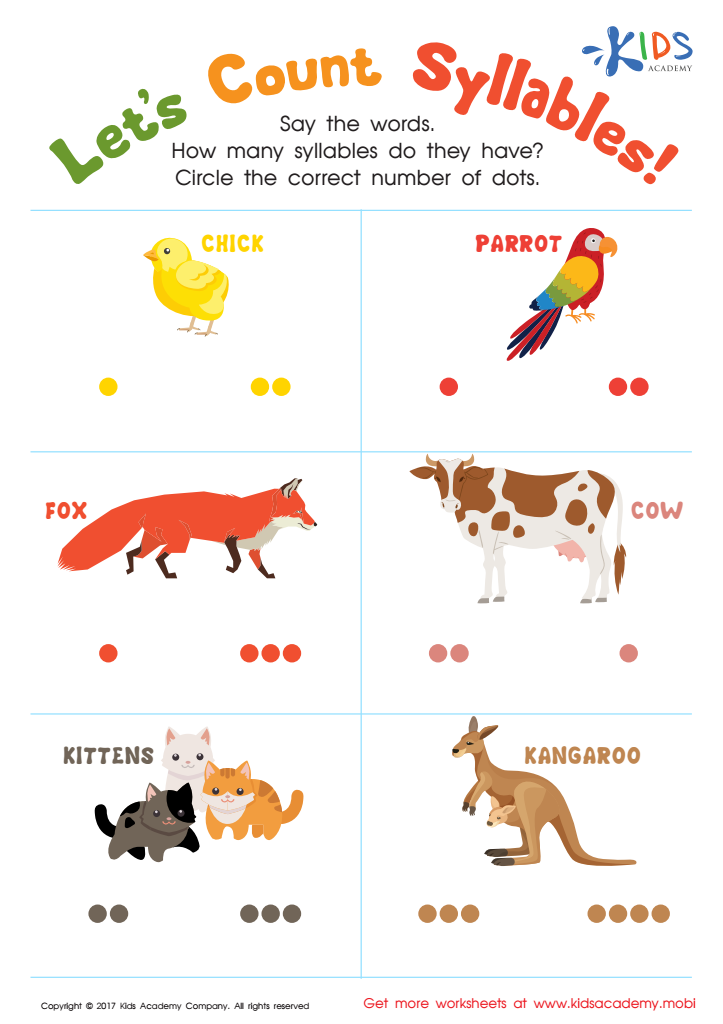

Lets Count Syllables Worksheet
Vocabulary enhancement through Normal Elementary Phonics for children ages 4-9 is vital for several reasons. At this developmental stage, children are rapidly acquiring language skills that serve as the foundation for their future learning. Quality phonics programs not only improve reading abilities but also enhance vocabulary, allowing children to express themselves more effectively and comprehend more complex texts.
Phonics programs provide systematic instruction that helps children understand the relationships between sounds and letters. This understanding cultivates decoding skills, empowering children to read independently, which, in turn, exposes them to new words. A rich vocabulary is crucial to academic success; it correlates strongly with reading comprehension and effectiveness in communication.
Furthermore, children who engage with phonics early build confidence in their reading capabilities, leading to a more positive attitude toward learning. Enhanced vocabulary supports cognitive development, enabling children to articulate thoughts clearly and engage meaningfully in classroom discussions.
Ultimately, parents and teachers who prioritize vocabulary enhancement through phonics equip children with essential language skills that extend beyond the classroom. Investing in these early literacy experiences lays a strong foundation for lifelong learning, better educational outcomes, and effective communication skills that will benefit children throughout their lives.
 Assign to My Students
Assign to My Students




